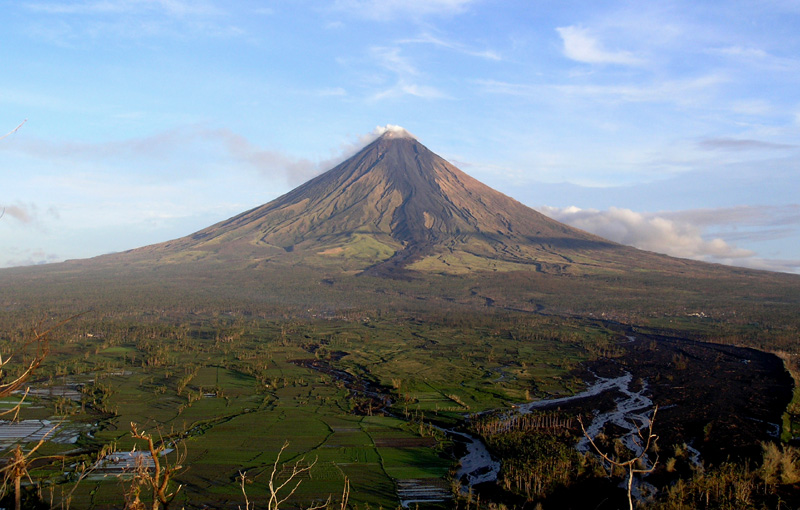
© Tam3rd/Wikimedia CommonsMayon Volcano in Albay, Philippines
Three active volcanoes in Luzon showed signs of increased activity Sunday, exhibiting rock fall, moderate steam, and minor quakes in their respective vicinities, state volcanologists reported.
The Philippine Institute of Volcanology and Seismology (Phivolcs) said signs of unrest were detected in Mayon, Taal, and Bulusan volcanoes during its 24-hour observation.
Phivolcs reported having observed one rock fall at Mayon Volcano in Albay and its steam was white and moderate.
Meanwhile, crater glow was not observed due to thick clouds covering Mayon's summit.
"Results of ground deformation surveys conducted last November and December 2010 showed that the volcanic edifice remains inflated based on 2008 baseline data," the Phivolcs said.
Alert Level 1 has been raised due to Mayon's current activity.
While no eruption is imminent, Phivolcs strongly prohibited the public from wandering within the six-kilometer radius permanent danger zone (PDZ) due to the continuing threat from sudden small explosions and rock falls from the upper and middle slopes of the volcano.
"Active river channels and those perennially identified as lahar-prone areas in the southern sector should also be avoided especially during bad weather conditions or when there is heavy and prolonged rainfall," it warned.
Meanwhile, 10 minor volcanic earthquakes were detected around Taal Volcano in Batangas last Saturday.
Phivolcs explained that two of 10 tremors, which occurred at 1:47 p.m. and 1:48 p.m., were felt at Intensity 1 by residents in Barangay Pira-piraso located at the northern side of the volcano.
Visual observation and temperature measurement conducted last January 10 showed that steaming activity at the thermal area inside the main crater remained weak, while the water temperature and acidity (pH) were within the normal range.
"Likewise, the Main Crater Lake remained bluish green in color and no bubbling was noted. Results of the precise leveling ground deformation survey conducted around the Volcano Island last December 2010 showed slight inflation as compared with September 2010 survey," the Phivolcs said.
Taal Volcano's status remains at Alert Level 1, which means that a major eruption is not imminent.
However, Phivolcs reminded the public to refrain from entering the main crater due to sudden occurrence of steam explosions and accumulation of toxic gases.
It added that the northern portion of the main crater rim, in the vicinity of Daang Kastila trail, may also be dangerous when increased steam emission is reactivated along existing fissures.
Phivolcs explained that the entire Taal Volcano Island is declared a PDZ, which means that permanent settlement in the island is strictly not allowed.
With regard to Mount Bulusan in Sorsogon, Phivolcs recorded one volcanic earthquake during the past 24 hours.
"Visual observation of the crater and known thermal vents was not possible due to thick clouds covering the summit," Phivolcs said.
It added that no lahar event was reported or observed.
State volcanologists noted that ground deformation surveys conducted last November and December 2010 showed that the volcanic edifice was slightly deflated relative to August 2010 survey.
Bulusan Volcano's status remains at Alert Level 1, meaning the source of activity is hydrothermal and shallow.
However, no entry to the four kilometer radius PDZ is strongly advised, since the area is at risk to sudden steam and ash explosions.
Residents near valleys and river/stream channels were also advised to be vigilant against sediment-laden stream flows and lahars in the event of heavy and prolonged rainfall.
Reader Comments
to our Newsletter